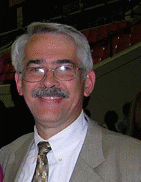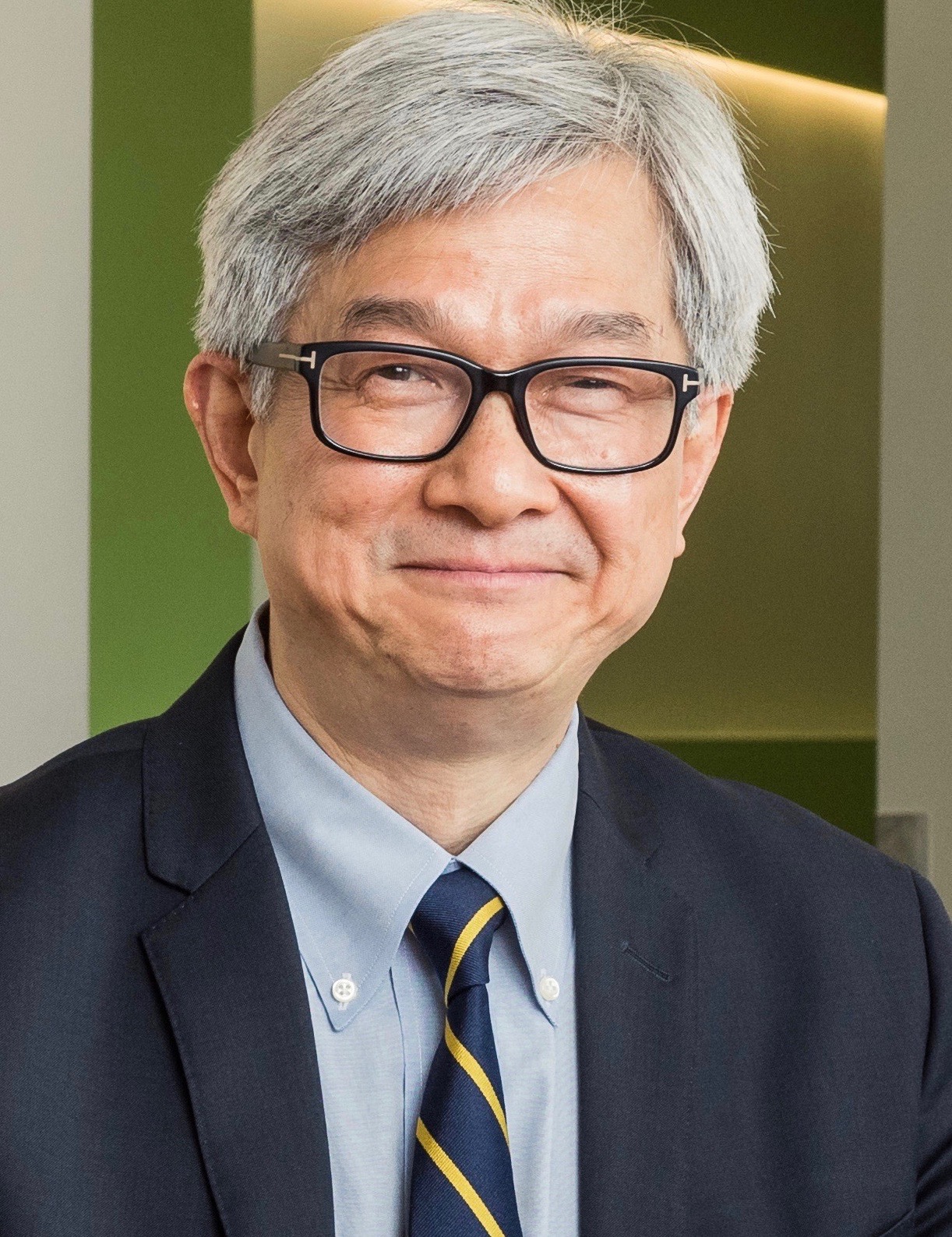Other Track AgendasCirculating DNA, Circulating RNA, Circulating Tumor Cells | Exosomes and Microvesicles | Sample Preparation and Analysis |

Monday, 23 March 201508:00 | Conference Registration, Coffee, and Breakfast Pastries | |
Joint Plenary Session: Extracellular Vesicles and Extracellular Nucleic Acids as Circulating Biomarkers |
| | |
Session Chair: John Palma, Ph.D., Roche Molecular Systems |
| | 09:00 |  | Keynote Presentation Exosomes: From “Dust” to Multiplexed Diagnostic Biomarker
Doug Taylor, Chief Scientific Officer, Exosome Sciences Inc, United States of America
Exosomes are nano-sized vesicles released by all cell types and their
protein and RNA cargo mirror the composition of their originating cells.
In the case of cancer cells, the released exosomes exhibit proteins and
RNA associated with the tumor and can be used as surrogates to define
tumor type and stage and to predict therapeutic responses. While
exosomes possess the FDA-defined features of ideal biomarkers and can be
easily obtained and assessed, several obstacles have limited their
clinical applications. The most critical barrier to their diagnostic
application is the isolation of disease-specific exosomes and
characterization their cargo. Emerging technologies will be discussed by
the isolation of exosomes, associated specifically with cancers,
allowing their use in diagnosis, patient stratification for therapy,
monitoring therapeutic responses in real time and early identification
of recurrence. These approaches target the unique properties and
compositions of specific vesicle populations. The isolation of enriched
pathology-specific vesicles enhances the signal to noise ratio and
allows the identification of markers directly derived from the specific
cell types. By correlating these circulating markers with the molecular
characteristics and real-time clinical parameters, the use of
circulating vesicles represents the ideal, multiplexed marker platform
for clinical management. |
| 09:30 |  | Keynote Presentation Saliva-based Exosomes for Liquid Biopsies
David Wong, Felix and Mildred Yip Endowed Chair in Dentistry; Director for UCLA Center for Oral/Head & Neck Oncology Research, University of California-Los Angeles, United States of America
Constitutive activation of epithelial growth factor receptor (EGFR) is
prevalent in epithelial cancers, particularly in non-small-cell lung
carcinoma (NSCLC). EGFR mutation predicts sensitivity to EGFR-targeted
therapy and mutation detection is mainly based on tissue biopsy, which
is invasive, expensive and time-consuming. Non-invasive, real-time,
point-of-care, inexpensive detection and monitoring of EGFR mutations in
NSCLC patients is highly desirable. We developed a novel core
technology, Electric Field-Induced Release and Measurement (EFIRM),
relying on a multiplexible electrochemical sensor that can detect EGFR
mutations directly from body fluids. EFIRM for EGFR mutation detection
was established in vitro, and correlated with tumor size from
xenografted mice. In clinical application, we demonstrated that EFIRM
can detect EGFR mutations from saliva and serum of 22 NSCLC patients.
And finally, a blinded test was performed on saliva from 40 NSCLC
patient saliva samples. The receiver operating characteristic analysis
indicated that EFIRM detected the exon 19 deletion with an area under
the curve (AUC) of 0.94 and the L858R mutation with an AUC of 0.96. Our
data indicate that EFIRM is effective, accurate, rapid, user-friendly,
and cost effective for the detection of EGFR mutations in saliva of
NSCLC patients. We termed this SAliva-Based EGFR (SABER) Mutation
Detection for detection and monitoring EGFR mutations in saliva of NSCLC
patients. |
| 10:00 |  | Keynote Presentation Performance of a Blood-based Assay for the Detection of EGFR Mutations in NSCLC
John Palma, Chief Medical Officer, Roche Sequencing Solutions, United States of America
|
| 10:30 |  | Keynote Presentation Comprehensive Genomic Profiling in Clinical Oncology: Overcoming the Challenges
Vincent Miller, Chief Medical Officer, Foundation Medicine, United States of America
|
| 11:00 | Coffee Break, Visit Exhibitors and Networking | 11:30 |  | Keynote Presentation Extracellular RNA in Biofluids as Biomarkers of Disease
Xandra Breakefield, Professor, Mass General Hospital (MGH)/Harvard Medical School, United States of America
Most cells in the body release extracellular RNA (exRNA) within vesicles
or in association with ribonucleoprotein/lipoprotein particles. This
overview talk will consider the types of RNA released, the biofluids
analyzed, and modes of evaluation of the quantity and sequence of exRNAs
as a index of different disease states. Examples will be provided for
analysis of exRNA from serum/plasma, urine and cerebral spinal fluid of
cancer patients with a focus on discovery of novel non-coding RNAs and
quantitation of rare, mutant RNAs. |
| 12:00 |   | Keynote Presentation Noninvasive Cancer Genomics and Exploring Potential Clinical Applications of Circulating Tumor DNA
Nitzan Rosenfeld, Senior Group Leader, Cancer Research UK and CSO, Inivata Ltd.
Davina Gale, Head of Molecular Diagnostics, Co-Founder, Inivata, United Kingdom
Novel biomarkers are required to accurately assess tumour burden and response in cancer. Circulating tumour DNA (ctDNA), containing tumour-specific DNA alterations, is present in patient plasma as a fraction of the total cell-free DNA. The study of ctDNA levels and mutational profile could potentially inform clinical decision making, be used to monitor tumour dynamics, assess response to treatment and identify mutations associated with acquired drug resistance. Inivata is a clinical cancer genomics company focused on harnessing the emerging potential of circulating DNA analysis to improve cancer testing and treatment. Novel applications of ctDNA are enabled by Inivata’s technology platform which includes its proprietary enhanced TAm-Seq™ technology, to allow the detection and analysis of genomic material from a cancer patient’s cell-free DNA collected through routinely accessible blood samples. This non-invasive approach – a liquid biopsy – offers a revolution in how cancer is detected, monitored and treated. |
| 12:45 | Networking Lunch and Exhibit, Poster Viewing | 14:00 |  Technology Spotlight: Technology Spotlight:
Purification of Circulating Cell-Free DNA from Plasma using the Automated QIAsymphony SP Instrument
Alexander Wolf, Scientist, QIAGEN
A new ccfDNA extraction protocol on the QIAsymphony® SP revealed a highly efficient recovery of total ccfDNA and fetal ccfDNA compared to the QIAamp® Circulating NA Kit. Linearity was shown for ccfDNA yield from 2-6 ml plasma input. A high efficiency for extraction of low copy numbers of ccfDNA is given. Compatibility of eluates to manifold downstream assays was confirmed for different PCR and methylation-sensitive assays, library preps and subsequent NGS-based analysis of chromosomes. Concluding, the novel protocol enables automated ccfDNA recovery from up to 4 ml plasma and up to 96 samples per QIAsymphony® SP run in 6 hours combined with high recovery efficiency.
The applications presented here are for research use only. Not for use in diagnostic procedures.
| |
Session Title: Comparison of Circulating RNA and Circulating DNA as Biomarkers |
| | |
Session Chairs: Martin Beaulieu, PhD, Regulus Therapeutics and Hugh Fan, PhD, University of Florida |
| | 14:30 |  | Keynote Presentation Detection and Genotyping of Sequence and Structural Alterations in the Circulation of Cancer Patients
Mark Sausen, Vice President, Research & Development, Personal Genome Diagnostics, United States of America
|
| 15:00 |  | Keynote Presentation Circulating Biomarkers for Oncology/Alzheimer's Disease Drug Development
Yoshiya Oda, President, Eisai Inc, United States of America
|
| 15:30 |  | Keynote Presentation Assessing the Promise of Liquid Biopsy to Enable Detection of Druggable Genomic Alterations Using Targeted NGS Assays Optimized for CTCs and ctDNA
Phil Stephens, Chief Scientific Officer, Foundation Medicine, United States of America
Circulating tumor cells (CTCs) and circulating tumor DNA (ctDNA) could enable characterization of druggable targets in blood samples from patients with cancer, especially when conventional biopsies are unobtainable, to inform selection of targeted therapies and provide insights into systemic disease. To assess the clinical utility of the liquid biopsy, we have genomically profiled primary resections, metastatic biopsies, ctDNA and CTCs from the same patients with a diverse spectrum of solid tumors. |
| 16:00 | Development of Circulating Tumor DNA Biomarkers using Next Generation Sequencing
Brian Dougherty, Executive Director, Translational Genomics, Oncology IMED, AstraZeneca R&D, United States of America
Detection of mutations from plasma-derived circulating tumor DNA presents a number of technical challenges. In-house Next Gen Sequencing is being developed with the goal of inexpensive, accurate, high-sensitivity mutation detection, and a number of external collaborations and fee-for-service agreements have been established to further refine this technology. | 16:30 | Circulating Tumor DNA as a Noninvasive Marker of Therapeutic Response and Resistance
Abhijit Patel, Associate Professor, Yale University School of Medicine, United States of America
Our group has developed an ultrasensitive, multi-target assay that can identify and quantify mutant ctDNA using novel error-suppression techniques applied to next-generation sequencing data. Broad coverage of mutation hotspots and warm-spots allows detection of ctDNA without prior knowledge of the tumor’s mutation profile. Clinical examples will be presented in which this approach is being used to noninvasively monitor changes in ctDNA levels in response to treatment and to track the emergence of mutations that confer resistance to targeted therapies. | 17:00 | Harnessing the Potential of Circulating Tumor DNA to Improve Cancer Care
Cesar Castro, Director – Cancer Program, Center for Systems Biology, Massachusetts General Hospital, Harvard Medical School, United States of America
Circulating tumor DNA (ctDNA) is released by most early stage and advanced cancers into the blood stream. As such, they hold potential for minimal invasive and serial testing to screen and monitor cancer progression. This presentation will review our current understanding of the ctDNA landscape, technologies that detect them, and implications for cancer care. | 17:30 | A Functional Role for Extracellular RNAs as Biomarkers in Cardiovascular Diseases
Saumya Das, Assistant Professor in Medicine, Beth Israel Deaconess Medical Center and Mass General Hospital, United States of America
As the treatment for acute coronary syndromes has improved in the last decade, the sequelae of myocardial infarction such as heart failure and ventricular arrhythmias have increasingly contributed to morbidity, mortality and health care expenditure. Novel strategies to understand ventricular remodeling after myocardial infarction and onset of heart failure are critical to development of novel biomarkers to identify vulnerable patients and novel pathways for therapeutic intervention. Biomarkers that are functionally implicated in disease pathogenesis may be particularly robust and shed light on novel disease specific pathways. This presentation focuses on novel extracellular RNA biomarkers present in different plasma compartments and discusses their role as diagnostic and prognostic biomarkers. The specific case of microRNA-30d as a prognostic biomarker for cardiac remodeling and its functional role in remodeling is discussed in detail. The application and challenges of next generation sequencing to discover novel extracellular RNA biomarkers are addressed. | 18:00 |  | Keynote Presentation MicroRNA Biomarkers of Disease
Frank Slack, Director, Institute for RNA Medicine, Beth Israel Deaconess Medical Center Cancer Center/Harvard Medical School, United States of America
MicroRNAs are excellent candidates for human biomarker studies because their signature short sequences can be easily identified, they are stable in tissue and body fluids, and their expression patterns can be rigorously detected and quantified without harm to the individual. MicroRNAs have been found in multiple body fluids, such as serum and plasma, making them an attractive option for studying non-invasive, blood-based biomarkers. These circulating miRNAs are resistant to RNases and are in fact very stable in an extracellular environment, as they can be packaged in microvesicles, exosomes, or apoptotic bodies. Indeed, profiles of plasma and serum miRNAs have been linked to numerous cancers, and diabetes, indicating that miRNAs are a new class of blood-based biomarkers of human diseases. |
| 18:30 | Networking Reception: Enjoy Premium Beers, California Wines, and Appetizers with Your Colleagues with a Beautiful View of Boston and The Charles River | 19:45 | Close of Day 1 of the Conference |
Tuesday, 24 March 201507:30 | Morning Coffee and Breakfast Pastries | 08:00 | Breakfast Briefing: The State of M&A and Partnerships in Global Companion Diagnostics
Kristin Ciriello Pothier, Partner & Managing Director/Life Sciences Leader, Ernst and Young LLP, United States of America
Jeff Stoll, Vice President, Life Sciences, Ernst & Young LLP, United States of America
Presenters will highlight the current state of M&A and partnerships in CDx amongst all stakeholders from a financial and a commercial perspective. Based upon the experience at EY in M&A and partnership diligence and commercial strategy development and their EY Precision Medicine ™ programs, they will outline areas where strides have been made to improve successful co-development and launch of Rx and CDx programs, and outline areas where different industry values/priorities and technology advances continue to challenge the overall potential of these partnerships. | |
Session Title: Comparion of the Various Circulating Biomarker Classes |
| | |
Session Chairs: Weian Zhao, PhD, University of California-Irvine and Shannon Stott, PhD, Mass General Hospital (MGH) |
| | 08:30 | Detection of Circulating, Cell Free DNA in Plasma from Esophageal Adenocarcinoma Patients Using Digital PCR and NGS
Tony Godfrey, Associate Chair – Research, Department of Surgery, Boston University Medical Center, United States of America
Detection and quantification of mutated, circulating tumor DNA in plasma
or serum of cancer patients has great potential as a biomarker for
cancer detection, treatment selection and measuring response to therapy.
We are using digital PCR and ultra-sensitive NGS to evaluate
circulating tumor DNA for monitoring response to neoadjuvant therapy in
patients with oesophageal adenocarcinoma. This talk will focus on
technical challenges faced and how they are being overcome. | 09:00 | Profiling MicroRNAs in Circulation
Martin Beaulieu, Director, Regulus Therapeutics Inc, United States of America
Expression profiles of microRNAs are deregulated in cells undergoing pathophysiologic stress suggesting potential as markers of disease states. MicroRNAs (miRs) are regulatory factors that function to repress the transcription of multiple mRNAs, thereby affecting several biological pathways. Relative to other circulating nucleic acids, miRs are stable in circulation and are detectable in several biofluid types. To discover new markers to address clinical needs, we developed a highly reproducible quantitative miR profiling platform that is compatible with several sample types. Under the Regulus MicroMarkers? division, Regulus has conducted large-scale profiling studies and has profiled over 3,000 clinical samples to date and has identified potential miR biomarkers for a variety of clinical conditions. Recent results will be presented. | 09:30 | High Throughput Single-Cell Phenotype Isolation for Bio-Specimen Science by Protrusion Analysis Chip
Lidong Qin, Professor and CPRIT Scholar, Houston Methodist Research Institute, United States of America
There is increasing evidence that solid tumors are likely comprised of many subpopulations of cells with distinct genotypes and phenotypes, which is a phenomenon termed intratumor heterogeneity. Such heterogeneity becomes a major obstacle to effective cancer treatment and personalized medicine. Because of this inherent heterogeneity, data collected from cancer cell population-averaged assays likely hides valuable but rare events such as dramatic variations in gene expression at the single cell level. Therefore, understanding cellular heterogeneity from cancer biospecimens, especially in the study of phenotype-genotype correlation, will facilitate identification of new cell subsets, and assist in cancer prevention, diagnosis, and therapy. In this proposal, we focus on developing a high throughput approach for single-cell isolation based on cells’ capability in generating protrusions. To be able to retrieve the desired single adherent cell, a Protrusion Analysis Chip (PAC) is proposed, in which the single cell is captured by a single hook and physically isolated by a barrier. The PAC is rapid, operationally simple, highly efficient, and requires low-volume sample introduction. After adhesion and spreading, cell phenotype is identified microscopically and then the desired cell is retrieved for genotype analysis. The proposed technology developments and study plans may potentially strengthen the understanding of the relationship between phenotype and genotype at the single cell level. | 10:00 | Coffee Break, Networking, Exhibit and Poster Viewing | 10:30 |  Technology Spotlight: Technology Spotlight:
Recovery and Analysis of CTCs: Molecular Profiling of Pure Individual Cells Using the DEPArray™ Platform
Farideh Bischoff, Executive Director, Silicon Biosystems Inc
DEPArray ™ technology enables highly reliable recovery of individual target cells from complex heterogeneous populations. Molecular testing of individual CTCs following enrichment is not only complicated by the presence of normal cells but also by the heterogeneity among CTCs. Studies demonstrating the use of the DEPArray™ platform to identify and recover pure CTCs that are now amenable to downstream molecular profiling and NGS will be presented.
| 11:00 | Combining Aptamers with Antibodies for Isolation of Tumor Cells in Microfluidic Devices
Z Fan, Professor, University of Florida, United States of America
Circulating tumor cells (CTCs) in the peripheral blood are potential biomarkers for cancer diagnosis and prognosis. However, CTC are extremely rare, making their detection very challenging. To address this, we have combined aptamers with antibodies to create multivalent-binding surfaces for the capture and isolation of cancer cells. Higher cell capture efficiency was obtained than that using either antibodies or aptamers alone. In addition, we have employed microfluidic devices for detecting CTCs from peripheral blood samples of metastatic pancreatic cancer patients. We found that the CTC numbers correlated with the clinical outcome. | 11:30 |  Technology Spotlight: Technology Spotlight:
Multiplexed ICE COLD-PCR as an Upstream Enrichment Methodology for Enabling the Use of NGS for Determination of Mutations Present in Liquid Biopsies
Katherine Richardson, Vice President, Research & Development, Transgenomic, Inc.
This presentation will look at Multiplexed ICE COLD-PCR’s (MX-ICP) ability to enrich for all sequence alterations in the PCR product generated. This PCR product can then be used in any downstream platform to determine the nature of the sequence alteration. The data presented will focus on how the MX-ICP assay is ideally suited as an upstream process for NGS analysis of mutations present in cfDNA.
| 12:00 | Networking Lunch and Exhibit, Poster Viewing | 12:30 |  Technology Spotlight: Technology Spotlight:
A Novel, Portable, User-Friendly, Rapid and Inexpensive System for Detection of Circulating Tumor Cells-nCYTE Dx
Meeta Patnaik, CMO, AXON Dx
Axon Dx has developed a novel system for the detection and enumeration of circulating tumor cells. The talk will describe the functionality of the nCYTE Dx system including the n-CYTE Pac (reagents and consumables as well as the unique nAble Dx automated interpretation capabilities. The System can detect all the CTC’s, including those undergoing mesenchymal transformation and circulating stem cells in all the types of solid tumors measured till date.
| |
Session Title: Harvesting Clinical Value from Various Circulating Biomarker Classes (CTCs, ctDNA, Circulating RNA) |
| | |
Session Chairs: Lidong Qin, PhD, Houston Methodist and Abhijit Patel, MD PhD, Yale University |
| | 13:30 | Methods for Comprehensive Genomic Analysis of Genetic Alterations in Circulation of Cancer Patients
Theresa Zhang, Vice President, Research Services, Personal Genome Diagnostics, United States of America
- Development of PlasmaSelect for the detection of clinically relevant sequence mutations and translocations across a large number of genomic loci
- Development of METDetect for the ultra-sensitive detection of focal amplification of MET in plasma
- Case studies of utilizing circulating tumor DNA analysis to support clinical decisions and drug development
| 14:00 | Digital Quantification of Biomarkers in Blood Using the Integrated Comprehensive Droplet Digital Detection (IC 3D) System
Weian Zhao, Associate Professor, Department of Biomedical Engineering, University of California-Irvine, United States of America
We will present a new platform technology that detects rare blood biomarkers including bacteria in blood stream infections, CTCs, miRNA and exosomes in cancer with extremely high sensitivity, specificity, and throughput. The technology relies on microencapsulated sensing systems that detects intracellular genetic markers, cell surface proteins or secreted markers. | 14:30 | Microfluidic Isolation and Molecular Characterization of Glioblastoma Extracellular Vesicles
Shannon Stott, Assistant Professor, Massachusetts General Hospital & Harvard Medical School, United States of America
Extracellular vesicles (EVs) released from cancer cells into the bloodstream contain genetic information about the primary tumor. These EVs have the potential to be used for early diagnosis as well as to guide treatment, but can be challenging to reliably assay due to the heterogeneous population of MVs released from normal cells. We have taken a microfluidic approach to isolate these tumor derived MVs from serum from glioblastoma patients. In this talk, I will describe our latest technology for EV capture as well as the results of our molecular analysis of these EVs. Our data demonstrates that tumor-derived MVs can be selectively captured from serum, providing a less invasive method to obtain genetic information about the patient’s tumor. | 15:00 | Coffee Break, Networking, Exhibit and Poster Viewing | 15:30 | miRNAs as Circulating Diagnostic Biomarkers: The Promise and How We Can Get There
Pavan Kumar, Senior Scientist, Eisai Inc, United States of America
miRNAs have been an attractive class of biomarkers with a lot of studies published (especially over the last 5 years) demonstrating their potential diagnostic value in various disease indications. The presence of miRNAs in circulating body fluids in stable condition coupled with the rapid advances in the field of small RNA detection have positioned them as ideal biomarker candidates, be it for stand-alone diagnostics for diseases or as drug response or toxicology markers. But the promise of this exciting class of markers is also balanced with challenges in identifying reproducible miRNA signatures. The lack of reproducibility is due to many factors, including experimental design, site effects on sample handling and platform biases. A review of the challenges will be presented along with a case study comparing different profiling technologies, ending with a discussion on a robust profiling workflow, which would help in both discovery as well as validation of these miRNA signatures.
| 16:00 | Microfluidic Immunoaffinity Technology for Cell Isolation in Complex Clinical Samples
Kenneth Kotz, Assistant in Bioengineering & Instructor, Massachusetts General Hospital/Harvard Medical School, United States of America
Given the relative ease of collection, the peripheral blood is an ideal sample for genomic and proteomic monitoring of physiological perturbations in response to injury or disease. Translation of these advanced molecular tools into the clinic, however, has been difficult because of the technical challenges involved in sample collection and processing, including: (1) sample processing time; (2) blood volume; and (3) quality of the end product. We developed a set of microfluidic tools that overcomes many of the current difficulties in clinical sample processing. This talk will highlight the different technologies created in our lab for different sample types that have been successfully translated into a clinical research setting. | 16:30 | Enrichment of Mutations in Cancer Gene Panels from Tumors and Circulating DNA, using COLD-PCR
Mike Makrigiorgos, Professor of Radiation Oncology, Dana Farber Cancer Institute and Harvard Medical School, United States of America
Targeted re-sequencing of mutations in cancer-relevant genes provides opportunities for fine-tuning cancer therapy and follow-up during treatment, by examining mutations in tumors and bio-fluids such as circulating DNA from plasma. However, a major technical limitation has been the lack of sensitivity of cancer re-sequencing panels for mutations below 1-2% abundance, which is frequently the case for circulating DNA. We present a newly developed method via which mutations in numerous amplicons are first enriched via COLD-PCR in a singe-tube reaction, prior to targeted re-sequencing. Using this approach, mutations of 0.01-0.1% abundance can be detected via next generation sequencing. | 17:00 | Live Single Cell Functional Phenotyping in Droplet Micro-Reactors
Tania Konry, Assistant Professor, Department of Pharmaceutical Sciences, Northeastern University, United States of America
Cellular functional phenotype and cell-cell communication studies could make substantial progress in understanding mechanisms of immune regulation in hematologic tumors and lead to a variety of possibilities for targeted therapeutic approaches. While flow cytometry has traditionally been used to determine single fixed cell phenotypes, it cannot provide continuous measurements of proteins and secretions in the same individual live cells over time or measure the cellular phenotype during live cell-cell interaction. It is therefore different co-culture methods and immuno-assays are performed on groups of cells to study cell-cell interactions and secretions, under the assumption that all cells of a particular “type” are identical. However, recent evidence from studies of single cells reveals that this assumption is incorrect. Thus new approaches to single cell analyses and live cell-cell interaction on a single cell level are needed to uncover fundamental biological principles and ultimately improve the detection and treatment of disease. Here we propose a new droplet-based microfluidic technology to acquire live functional phenotyping of single cells of human immune system to monitor and regulate their interactions with tumor cells in hematologic cancer-relevant system. In particular, the technology proposed in this application will allow: 1) conducting dynamic and simultaneous multi-parameter analysis of both cell surface and secretions, 2) controlled delivery of regulatory agents and therapeutics to study their effect on functional phenotype of the cell 3) monitoring of cell-cell interactions on a single cell based level as well as 4) fluorescence-activated droplet sorting (FADS) system for specific cell phynotype isolation. To validate our approach live cell vaccines such as tumor specific T cells will be analyzed for their functional phenotype and interaction with tumor cells as well as sorted after for further in vivo studies. In addition, this single-cell technol | 17:30 | Close of Day 2 of the Conference |
|

 Add to Calendar ▼2015-03-23 00:00:002015-03-24 00:00:00Europe/LondonCirculating DNA, Circulating RNA, Circulating Tumor CellsSELECTBIOenquiries@selectbiosciences.com
Add to Calendar ▼2015-03-23 00:00:002015-03-24 00:00:00Europe/LondonCirculating DNA, Circulating RNA, Circulating Tumor CellsSELECTBIOenquiries@selectbiosciences.com